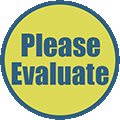Prior to entering the examination room
Familiarize yourself with the electronic medical record (EMR). Look at the Chart Review tab to scan the patient encounters. Be sure to familiarize yourself with the Past Medical History, Social History, Growth Chart, and Medications tabs. Students may update the information in the social history. Students may write a progress note and may enter and 'pend' orders.
Use of Worksheets
During a properly conducted well-child visit, a wide range of medical and social issues need to be addressed. A sample worksheet has been provided to obtain the child and family medical and social history at the first visit for a child of any age. On the left sidebar, there are worksheets specific for each age group.
These worksheets help to ensure that you remember to address issues in the history, physical examination, and social development that are specific to the age group.
Check off organ systems as you examine them and document any abnormal findings. Make a note of any of those systems you are unable to examine, e.g. ear canals that were occluded with wax, or if child was crying so loudly that you could not hear the heart sounds. Use the worksheet to present your findings to your preceptor.
Links on each worksheet will take you to additional information. We recommend that you spend some time exploring each checklist before you examine your first patient.
NOTE: For patient confidentiality, be sure you shred any temporary documents after you no longer need them.
Dress and Demeanor in the Examining Room
Remember that parents appreciate a professional demeanor. If you wear a white jacket, it should be clean. Dress appropriately. No open-toed shoes. No blue jeans. No chewing gum. Be sure your name tag is easily visible, worn on your upper torso near your face, with the photograph showing. Generally, men should wear a tie and women should be certain that their attire is modest.





